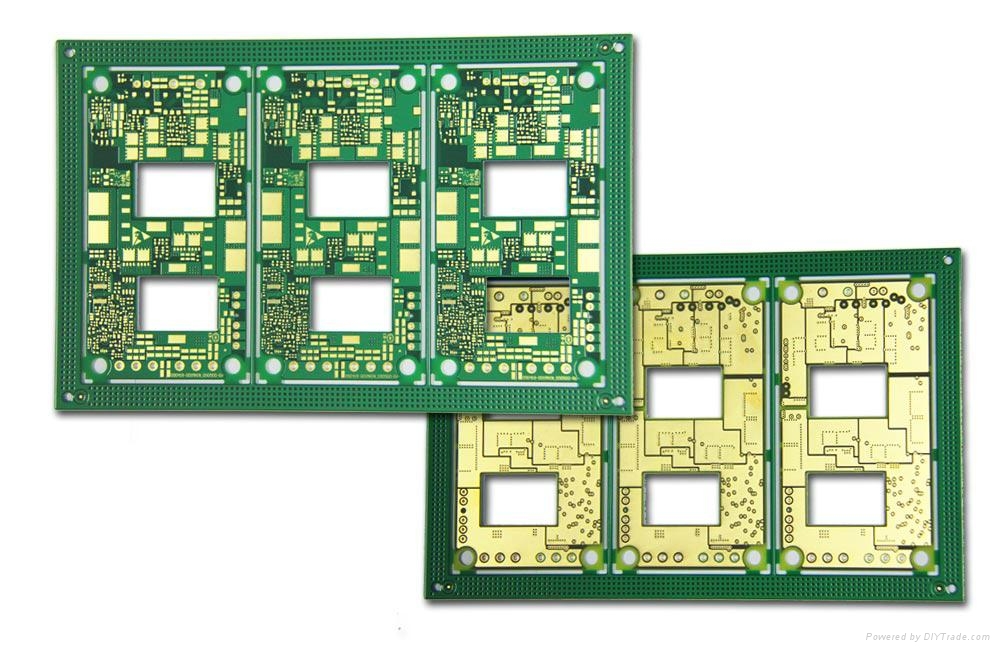Overview of Rogers PCB Materials
Rogers Corporation is a major manufacturer of printed circuit board (PCB) laminate materials. Rogers offers a wide variety of laminates for different PCB applications including high frequency circuits, high power devices, and flexible PCBs. Some of the popular Rogers laminates include:
- Rogers RO4000 Series – Glass reinforced, high frequency circuit materials
- Rogers RO3000 Series – Ceramic filled PTFE composites for high frequency applications
- Rogers RT/duroid 6000 – High performance ceramic filled PTFE substrates
- Rogers RO1200 – LoPro thin core materials for ultra thin flexible circuits
Key Properties of Rogers PCB Materials
Some of the key properties and characteristics of Rogers PCB materials include:
Dielectric Constant
The dielectric constant (Dk) indicates how much electrostatic energy can be stored per unit volume in a material. Lower Dk allows for higher frequency operation.
| Material | Dielectric Constant |
|---|---|
| RO4003C | 3.38 |
| RO4350B | 3.48 |
| RO1200 | 2.33 |
Dissipation Factor
The dissipation factor (Df) indicates the lossiness of a dielectric. Lower Df leads to lower signal loss.
| Material | Dissipation Factor |
|---|---|
| RO4003C | 0.0027 |
| RO4350B | 0.0037 |
| RO1200 | 0.002 |
Thermal Conductivity
Thermal conductivity (Tc) indicates how well heat transfers through a material. Higher Tc allows for better thermal management.
| Material | Thermal Conductivity |
|---|---|
| RO4003C | 0.71 W/m/K |
| RO4350B | 0.70 W/m/K |
| RO1200 | 0.2 W/m/K |
Applications of Rogers Materials

Some typical applications of popular Rogers laminates include:
- RO4003C – Used for professional and consumer high frequency circuits like WiFi, Bluetooth, 5G applications.
- RO4350B – Used for automotive radar circuits, defense and aerospace applications.
- RO1200 – Used for flexible antennas, rigid-flex designs, medical devices.
Rogers PCB Material Selection
When selecting a Rogers material, key factors to consider include:
- Frequency of operation – Materials with lower Dk allow higher frequencies
- Thermal properties – High Tc needed for good heat transfer
- Cost – Ceramic filled PTFE substrates generally more expensive
- Flexibility – RO1200 thin cores for flexible circuits
- Electrical performance – Low loss substrates (low Df) for high speed signals
Proper laminate selection ensures optimal performance of the PCB in its intended application.
Conclusion
Rogers Corporation offers a diverse range of high performance PCB substrate materials engineered for different applications. By selecting the appropriate laminate based on dielectric, thermal, and electrical properties, optimal PCB performance can be achieved.
Frequently Asked Questions
What are some examples of Rogers high frequency materials?
Some examples of popular Rogers high frequency materials include RO4003C, RO4350B, RT/duroid 5880 and 6002. These all have low dielectric constants and low loss for optimal high frequency performance.
How do Rogers flexible materials compare to rigid laminates?
Rogers flexible materials like RO1200 have much lower dielectric constants than rigid laminates, allowing for tighter trace spacing and routing. However, they have lower thermal conductivity and are not suitable for high power or high temperature applications.
What is the difference between RO4000 and RO3000 series?
The RO4000 series uses glass reinforcement making it lower cost but with higher dielectric constant and loss compared to the RO3000 series which uses ceramic filler for improved performance.
Can Rogers materials be used for 5G applications?
Yes, Rogers materials like RO4835TM and RO4000® LoPro® are well suited for 5G applications below 6 GHz. For mmWave 5G, higher frequency materials like RT/duroid® 6035HTC are recommended.
Are Rogers laminates suitable for automotive applications?
Yes, many Rogers materials meet automotive qualification standards. RO4835TM, RO3006TM and RO4350BTM are common choices for automotive radar and communications. The high thermal conductivity aids heat dissipation in hot environments.

Leave a Reply